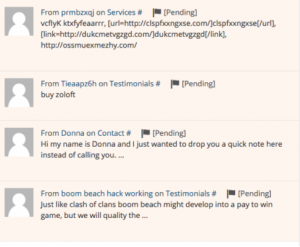While some are skeptical about the attribution narratives derived from touchpoint data, others insist that measuring marketing is a must.
When lead-to-account matching specialists LeanData decided to withdraw their marketing attribution solution, one beneficiary was marketing performance measurement platform Full Circle Insights. “A lot of our customers run their routing,” said Full Circle Insights President and CEO Bonnie Crater. “If you have a big sales organization and complex routing issues they have a really nice system.”
What’s more, both LeanData and Full Circle Insights built their offerings natively on the Salesforce platform. “That’s where the system of record is for sales,” Crater said. “When they made that announcement we started getting calls from some of their customers exploring Full Circle, because we are the logical vendor for those customers to move to, because it’s the same philosophy of building on the Salesforce platform. They invested in their routing app and we invested in attribution, funnel metrics and building a system that collects all the digital clicks – a much bigger marketing system. What we can help those customers with is replace their attribution and give them a bit more flexibility around it.”
Why LeanData retreated from attribution
As the B2B customer journey becomes ever more digital, debate has grown about the viability of traditional attribution modeling, with some calling for a radical rethink of whether it’s any longer possible to use “static metrics” to predict the success of digital touchpoints ahead of time. Did LeanData’s decision to pull out of marketing attribution reflect skepticism about its value? No — but then again, in a way, yes.
“We got into the attribution business really early on,” said LeanData CEO Evan Liang, “primarily because of the lead-to-account matching that we were doing. We had the matching technology and it had been used for two major, distinct purposes. People were using it for routing and some were using it for attribution. It was like two parallel paths.” For LeanData, the routing business was primary. Liang estimates they routed more than 229 million records in the past year. “For us it was the bigger and faster-growing business. Attribution was slower-growing and also had higher churn rates.”
The decision to move away from attribution was made over a year ago, but LeanData sought to make the transition gradual and smooth for their customers.
Using LeanData’s lead-to-account matching data for attribution purposes made sense. Up to a point. “What we were good at was saying we never miss a touch. Every lead contact will be associated to an account. That problem we solved. The models are simple – that’s math. You want first-touch, last-touch, multi-touch, that’s math. But what you do with this and how you think about what campaigns to run, that’s different.”
LeanData provided visibility into all the touchpoints on the customer journey, but for Liang that’s not the end of the matter. “It’s both the technology and the data,” he said, “and the interpretation and analysis – to me, none of the products, including ours, really makes it easy to tell that story consistently. You almost need a consultancy to do it. You need someone to tell the story. That’s not something we were great at and we weren’t going to build a consulting arm to do that. We knew we were good at getting you the data. The data is accurate, but what story do you want to tell? ‘Tell me what marketing campaigns I should do next year.’ What? We don’t know that. We don’t know enough about your marketing campaigns, and secondly that’s not our expertise.”
Liang’s skepticism turned out to run deeper. “Marketers sometimes want to spin a story regardless of whether the data really supports it or not. A lot of marketers, quite frankly, didn’t want what the data told them; they wanted to tell a different story.”
Why Full Circle Insights is all-in on attribution
Crater paints a much more positive picture of attribution modeling. Referring to the old saying, “Half the money I spend on advertising is wasted; the trouble is I don’t know which half, ” she says: “It’s still true, but we’re getting closer. The systems are way, way better than they were 20 years ago.”
She also makes the B2B customer journey sound relatively straightforward. “What we’ve found is that, for most of our customers, the number of digital touchpoints before the person says, ‘Hey, I want a demo,’ is somewhere between five and 20, and most people are around 10 or 12 – these are B2B companies. The 20 touches are important, but they might have clicked on something and spent 0.5 seconds on that page – so when you build your models you need to be intentional about how you count those digital touches.”
Brands should start their journey with simple models, she advised. “Don’t get into the weeds right away. Each of the models tell us a different story. A first-touch model tells you how you got that customer at the very beginning of the sales cycle. An even-spread, multi-touch model tells you a bigger story about what happened in the entire sales cycle. A last touch model tells you which of your campaigns is effective just before the customer is filling out a form and are actively saying they want to engage. They don’t fill out the form until they’re really ready. They don’t want to get a call while they’re just poking around.”
The challenge is that prospects who are just “poking around” often don’t identify themselves. That makes it hard to identify the content that had a positive impact on the prospect who ultimately converts. Some vendors –Crater mentioned Demandbase and 6Sense – address this challenge using extensive firmographic data, including business IP addresses.
ROI and attribution are not the same
Crater had read one of our previous articles on marketing attribution and wanted to demonstrate that ROI and attribution are not the same thing. ROI is a tricky term for marketers, she explained. “ROI is about revenue minus the cost. If you don’t have a good cost number, it’s hard to do ROI and there’s lots of things we do in marketing that don’t really have good cost numbers. For example, a white paper that you wrote five years ago is still doing very well, but it only cost the company $ 2,500 to create it – is that really the cost, this year? What’s the cost of a web page? These are difficult questions.”
The cost of digital advertising, on the other hand, is easy to quantify. “Finance keeps track of those costs very well,” she said. “But the cost of an individual campaign, that’s pretty tough. Smart people skip that and track it at a much higher level.”
She also wanted to distinguish attribution from funnel metrics. “There are two types of marketing measurement. There’s the attribution, which is impact on pipeline and revenue, but there’s also funnel metrics – and funnel metrics are really important for measuring process. Efficiency in marketing is about your process, especially in a longer, more complex sales cycle. The other piece of attribution is really important for budgeting. It’s for prioritizing campaigns programs or campaign types based on results.”
Crater not only thinks it’s possible to predict the outcome of future campaigns based on past results. She also thinks it’s necessary. “Everyone needs to measure their marketing.”
The post Why marketing attribution is both a challenge and a necessity appeared first on MarTech.
MarTech(22)
Report Post





